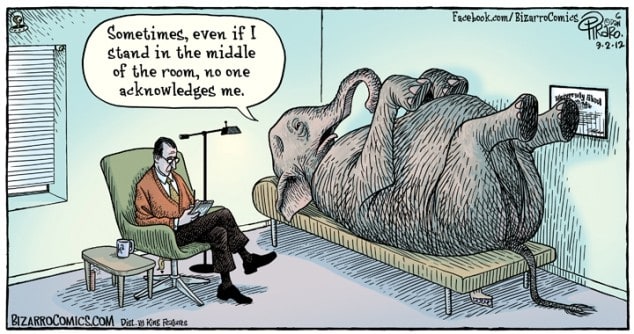What are your biggest leadership challenges and questions right now? Where are you struggling to apply the lessons from the Lighthouse blog and other sources?
Today, we are launching a new blog series called, "Ask Lighthouse.” It's a new weekly post on the Lighthouse blog that answers your questions about leadership and gives you actionable ways to improve specific to the situations of the questioner.
Each week, Jason Evanish, the CEO and founder of Lighthouse, and other leaders will share their suggestions for overcoming your biggest challenges based on their experience and lessons learned helping others.
The goal is to provide nuance and detail that you can't find in our long-form posts that try to be more generally applicable.
Submit Your Questions for Next Week Here
This Week's Ask Lighthouse: Managing Peers, Bouncing back after Layoffs, and Being too Friendly as a Leader
Our first post in this series focuses on leading your team in three situations you probably have experienced at some point in your career:
- How to lead your team members after making the transition from peer to manager
- Differentiating between caring for your team and being friends with them
- Handling the difficulties of leading after layoffs
Let's get right into the questions and their answers.
Transitioning From Peer to Manager: When a Direct Report Wanted Your Job...
Question #1:
"I'm a new manager and I'm managing a person who was considered for my position. Unfortunately, they're passively undermining or ignoring everything I do as a leader. I don't want to make a bad situation worse by disciplining them. How should I approach this?”
Lighthouse's Answer:
Dealing with resentful peers is one of the most common leadership challenges for new managers. If a former peer is undermining you, that's already a bad and awkward situation. So why just not take this head on?
Here's how you can do that:
Talk to them and address the elephant in the room. Your one on ones are the perfect opportunity to do this. Often, people just want to feel heard. If you listen to them and allow them to express their frustrations, you'll be closer to finding out the root cause of the issue.
This will allow you to work together to address the awkwardness. It's a step toward helping you deal with the elephant in the room. For example, if they believe they were a better choice for the role, ask what area you can work on as a manager to improve. This will show them you're actually listening and value their opinion.
Embrace that initial wave of awkwardness and you'll be showing everyone you're ready to face challenges in a constructive way. You may even find things they're passionate about that you can delegate to them; it won't give them the job title they wanted, but may give them a place you can leverage their skills and passions in a win-win way.

And if this doesn't work?
If you can't fix your relationship with a former peer after a few months of trying, it's time for an alternative solution. Regardless of how talented someone is, you literally can't afford to keep them if they're creating a toxic environment:
A Harvard Business Study School study has shown that up to 80 percent of an organization's employees can lose time worrying about an uncooperative team member.
If your former peer doesn't want to change their attitude, discuss with them whether transferring to another department or team may be better for everyone. If that's impossible, they may need to move on, again in a mutually agreed upon, professional way.
For more recommendations on what to in similar situations, check out our post about managing former peers.
Should Managers be Friends with Employees?
Question #2
"I like joking around and being on friendly terms with my team. Unfortunately, I've developed a bit of a reputation for being chummy with everyone. Do you know of any ways of building authority that won't come across as forced? I feel like I could get better performances from everyone if they saw me as more of a leader and less of a friend.”
Lighthouse's Answer:
There's a great explanation from Dick Costolo that tackles this question:
If you don't feel like watching the entire video, here's Costolo's most important point:
"As a leader, you need to care deeply, deeply about your people while not worrying or really even caring about what they think about you. Managing by trying to be liked is the path to ruin.”
This sounds cruel, but it's not meant to be. Costolo later added some context to his quote by saying:
"People interpreted that as ‘OK, Dick is saying I should be a jerk…' No one wants to work for a jerk. But as a CEO, you sometimes have to make decisions that are right for the company, and a lot of times people won't like you…but, ultimately, they'll trust you. And that's what's most important.”
If you're the manager, you can't play the part of the friend in the "lewd jokes and beers” kind of way, or the "gossip and drink martinis” way either.
Having authority simply doesn't work if you're friends with someone.
To fix the situation, you'll need to:
- Acknowledge the issue and explain changes are coming.
- Keep being warm and friendly, but not like you're their outside work friend.
- When the team goes out socially, you don't drink, and you head home early. That's part of being the boss. Many companies have been brought down by a drunk boss doing any number of bad things from hitting on staff, to saying something that gets them in trouble/offends someone/or loses respect.
By maintaining some level of professionalism, even in social situations with your team, it's easier to then have difficult conversations and make tough decisions with your team other times.
The mantle of leadership can be heavy at times, and one of them is recognizing that the example you set matters even in social situations. As Dick Costolo said, you have to care deeply about them, but not worry about how they feel about you, which means there are lines of being friendly you can't cross when management and hierarchy is involved.
Leading after a Layoff: How to Help Your Team Bounce Back
Question #3
"Due to COVID-19, 40% of my team got laid off. The other 60% is afraid for their jobs and their performance has suffered, but I can't really blame them. What can I do to motivate them?”
Lighthouse's Answer:
After a period of layoffs, you're going to be tasked with one of the biggest leadership challenges of your career - helping your team bounce back.
After a period of layoffs, you're going to be tasked with one of the biggest leadership challenges of your career - helping your team bounce back.
Dave Hitz, billionaire former CEO & cofounder of NetApp and the author of How to Castrate a Bull, recommends three steps for dealing with this situation:
- Share the pain with your team and tell them how difficult it was for you to make the decision. Express empathy for what those let go must be going through.
- Be transparent about why you made the decision. As uncomfortable as that may be, telling the truth is always the best way to show your team you respect them, no matter what happens in the future.
- Give your team hope. Dealing with the aftermath of losing colleagues is tough. That's why it's crucial to share your vision for moving forward as soon as possible. Give your people something to strive for. Even in the most difficult circumstances, they need goals to avoid feeling aimless and hopeless.
We couldn't have predicted the devastating effect of COVID-19 on the global economy. The reasons causing you to do layoffs were most likely completely out of your hands.
However, the silver lining is that things are slowly reverting back to normal. If you create a new vision to help your team understand how you can get back on your feet, you should be able to motivate them.
Share wins with them and highlight progress so they can see where things may be looking up, and engage them in ideas and tactics to turn the corner. This approach is how some of the most successful companies became stronger after a crisis.
For more detailed advice, check out our article on how to do layoffs and their aftermath.
What are Your Biggest Leadership Challenges? Let us Know!
At Lighthouse, we're always collecting feedback and looking for ways to help you improve.
What are your biggest leadership challenges right now? Let us know by submitting your question for next week here.
We'll anonymize anything needed to respect your privacy, and you'll get an answer to your biggest challenge right now.




